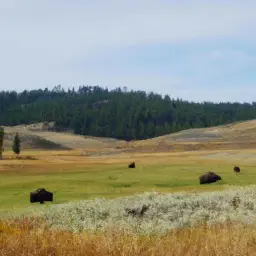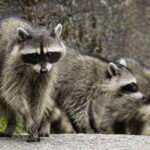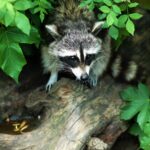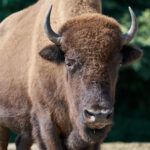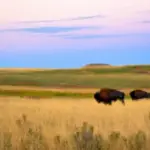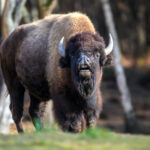Get ready to embark on a journey into the wild and uncover the hidden secrets of where the American bison lives.
History of the American Bison’s Habitat
Pre-Columbian Era Habitats
The American Bison, also known as the American buffalo, once roamed vast regions of North America, including the Great Plains, the Rocky Mountains, and the Midwest.
Prior to the arrival of European settlers, millions of bison traversed these landscapes, shaping and adapting to a variety of habitats. They were an integral part of the ecosystem, with their grazing patterns influencing the vegetation and creating a balanced environment.
The bison relied on the grasslands, prairies, and open woodlands for food and shelter, coexisting harmoniously with other wildlife species. These habitats supported thriving populations of bison for thousands of years.
Transitional Habitats in the 19th Century
The 19th century brought significant changes to the American bison’s habitat due to westward expansion, settlement, and the rapid growth of cities and towns.
The once vast bison ranges were gradually replaced by agricultural fields, grazing lands for domesticated livestock, and urban areas. This period witnessed the decline of the bison population as a result of unregulated hunting, commercial exploitation, and the destruction of their natural habitats.
Transitional habitats emerged as bison were forced to adapt to smaller and fragmented areas of open grasslands and prairies.
Crisis and Conservation in the 20th Century
The bison faced a severe crisis in the 20th century, with their numbers dwindling to near extinction. However, conservation efforts played a crucial role in saving the American bison from complete eradication.
The establishment of national parks, such as Yellowstone National Park, provided protected habitats for the bison to recover and thrive.
Through captive breeding programs and reintroduction initiatives, the bison population slowly rebounded, although they now inhabit a fraction of their historic range.
Conservation efforts in the 20th century were instrumental in preserving the iconic species and ensuring the survival of the American bison.
Significant Habitats of the American Bison Today
Yellowstone National Park
Yellowstone National Park, located primarily in Wyoming, is recognized as one of the most important habitats for the American bison.
This iconic park is home to the largest remaining free-ranging herd of bison in the United States. With its expansive grasslands, forests, and geothermal features, Yellowstone provides an ideal habitat for the bison to graze and roam.
The park’s commitment to conserving and managing the bison population has been essential in preserving the species and maintaining their natural behaviors and ecosystem functions.
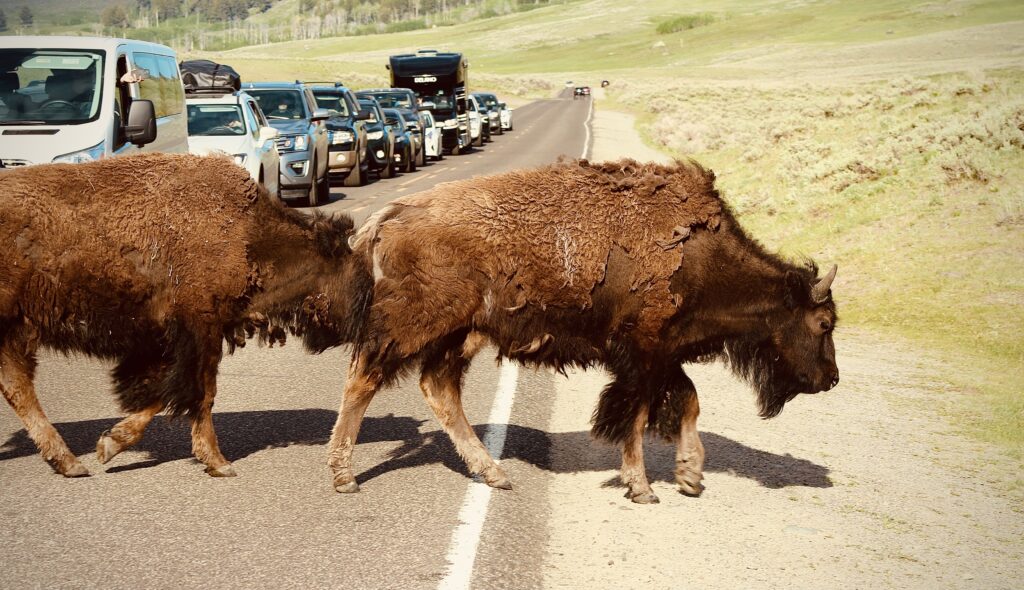
Badlands National Park
Situated in South Dakota, Badlands National Park is another significant habitat for the American bison. The rugged terrain, mixed grass prairies, and striking rock formations create a unique environment that supports a variety of wildlife, including bison.
The park’s efforts to protect and restore the bison population have been successful, making it an important site for research and conservation of the species.
Visitors to Badlands National Park have the opportunity to witness these majestic creatures in their natural habitat and learn about the ongoing conservation efforts.
Grand Teton National Park
Grand Teton National Park, located in Wyoming, is renowned for its stunning mountain landscapes and diverse array of wildlife. The park serves as a crucial habitat for the American bison, providing open meadows and forests for grazing and shelter.
The bison population in Grand Teton National Park contributes to the ecological balance of the region and enhances the park’s rich biodiversity.
Visitors to the park can witness the majestic bison herds against the backdrop of the Teton Range, showcasing the harmonious coexistence of wildlife and natural landscapes.
How Climate Affects American Bison’s Habitat
Impact of Winter
The extreme winter conditions in some regions can significantly impact the American bison’s habitat. Cold temperatures, heavy snowfall, and limited food availability pose challenges to the bison’s survival.
During harsh winters, the bison must rely on their well-adapted abilities to withstand the cold, such as their thick fur, insulating fat reserves, and ability to dig through snow to uncover grasses.
They may also gather in sheltered areas or use their large bodies to create paths in the snow, allowing them to reach food sources. The bison’s resilience and ability to adapt to winter conditions are crucial for their survival in regions with cold climates.
Adaptations for Summer and Drought
Summer brings its own set of challenges to the American bison’s habitat, particularly in regions prone to drought. These arid conditions can lead to a scarcity of water and vegetation, posing a threat to the bison’s well-being. However, the bison have developed adaptations to cope with the summer months.
They possess a unique ability to conserve water, obtaining much of their hydration from the vegetation they consume.
In response to drought, bison herds may engage in long-distance migrations in search of greener pastures and water sources, ensuring their survival by constantly adapting to changing climate conditions.
Climate Changes Influence on Migration
Climate change has the potential to disrupt the American bison’s habitat and migration patterns. As global temperatures rise and precipitation patterns shift, the availability of suitable habitats may change, impacting the bison’s ability to maintain their traditional migration routes.
Changes in vegetation and water availability can alter the timing and location of their movements, affecting their access to food and water sources.
Conservation efforts must take into account these potential changes, ensuring the protection of crucial habitats and promoting landscape connectivity to accommodate any shifts in the bison’s migratory behaviors.
Land Use and The American Bison
Natural Grazing Patterns and Implications
The American bison’s natural grazing patterns have played a critical role in shaping the ecosystems they inhabit. Their grazing, trampling, and wallowing behaviors have profound implications for vegetation diversity, soil health, and the overall balance of their habitats.
Bison grazing stimulates plant growth, prevents woody encroachment, and promotes the dominance of grasses, which in turn supports a wide range of other species.
These natural grazing patterns have been disrupted by land use changes, such as the conversion of grasslands for agriculture or the fragmentation of habitats by urban development.
Efforts to restore and maintain natural grazing patterns are vital for preserving the bison’s habitat and the ecological functions it sustains.
Impacts of Agriculture and Ranching
The expansion of agriculture and ranching activities has had a significant impact on the American bison’s habitat. Large portions of their historic range have been converted into farmland or rangeland for livestock.
While some bison populations coexist with agricultural practices, conflicts can arise over grazing competition and diseases transmitted between domesticated livestock and bison.
Ranching practices, such as fencing and infrastructure development, can fragment habitats and disrupt the natural movements of bison herds.
Collaborative initiatives between farmers, ranchers, and bison conservationists are crucial in balancing conservation goals with the needs of agriculture and ranching industries.
The Effects of Urban Development
Urban development poses a growing threat to the American bison’s habitat. Expanding cities and towns result in the loss of open spaces, fragmentation of habitats, and increased human-wildlife conflicts.
Urbanization disrupts bison migration routes, limits access to suitable grazing areas, and increases the risk of collisions with vehicles.
Planning and implementing wildlife corridors, protected green spaces, and sustainable land development practices are essential in mitigating the negative impacts of urbanization on bison habitats.
Taking into account the needs of the bison and other wildlife species in urban planning is crucial for maintaining their ecological balance and ensuring their long-term survival.
Conservation Efforts and Protected Habitats
National Parks As Protected Habitats
National parks have played a vital role in protecting and preserving the American bison’s habitat. These designated protected areas provide safe havens for bison herds, allowing them to roam freely and maintain their natural behaviors.
Parks such as Yellowstone, Badlands, and Grand Teton have implemented conservation measures to manage the bison populations, monitor their health, and maintain the integrity of their habitats.
Collaboration between national park administrations, scientific researchers, and local communities contributes to the success of conserving the American bison and their habitats within these protected areas.
Private Conservation Lands and Reserves
In addition to national parks, private conservation lands and reserves have emerged as crucial habitats for the American bison. Through partnerships with landowners, nonprofit organizations, and government agencies, private lands are managed to support bison populations and promote ecological restoration.
These conservation lands not only provide habitat protection but also facilitate research, public education, and sustainable land management practices.
The commitment of private landowners to conserving the bison’s habitat highlights the importance of individual contributions to ensure the long-term survival of the species.
Efforts of Indigenous Tribes and Coalitions
Indigenous tribes and coalitions have played a significant role in conserving the American bison’s habitat. Many Native American tribes consider the bison sacred and recognize their cultural and historical connections to this iconic species.
Tribes have established bison herds on their lands, implementing sustainable management practices and working towards the restoration of bison populations.
Collaborative efforts between tribes, conservation organizations, and governmental agencies have resulted in successful initiatives that integrate cultural preservation, ecological restoration, and habitat protection, ensuring the continued presence of bison on tribal lands.
The American Bison’s Habitat Across Different U.S. Regions
The Midwest Region
The Midwest region of the United States encompasses a diverse range of habitats that have historically supported American bison populations.
The tallgrass prairies, savannas, and woodlands of this region provided abundant grazing opportunities for bison herds.
Efforts to restore and conserve these habitats, such as the reintroduction of bison to prairie remnants and the establishment of nature reserves, have been essential in preserving the Midwest’s unique ecosystems and allowing the bison to thrive once again.
Collaborative partnerships between landowners, government agencies, and conservation organizations have contributed to the successful recovery of the bison’s habitat in the Midwest.
The Great Plains Region
The Great Plains region is synonymous with the American bison, as it once supported some of the largest and most iconic herds in history.
The vast grasslands, prairies, and meadows of the Great Plains provided ample grazing areas for bison and facilitated their migratory patterns.
While the landscape has undergone significant changes due to agriculture and urbanization, protected areas such as national grasslands and state parks continue to provide crucial habitats for the bison.
Conservation efforts to restore native prairies, encourage sustainable ranching practices, and enhance landscape connectivity are vital for the long-term survival of the bison in the Great Plains region.
The Rocky Mountain Region
The Rocky Mountain region presents unique challenges and opportunities for the American bison’s habitat. The rugged terrain, montane grasslands, and alpine meadows of this region provide diverse habitats for bison populations.
Protected areas like national parks, wildlife refuges, and state lands serve as strongholds for the bison, allowing them to thrive in these high-altitude environments.
Collaborative efforts to manage and conserve the bison’s habitat in the Rocky Mountain region involve balancing the needs of the species with recreational activities, tourism, and other land uses.
Protection of critical migration corridors and the preservation of intact ecosystems are essential for maintaining the bison population’s genetic diversity and ecological functions in this region.
Impacts of Predation on the American Bison’s Habitat
Impact of Wolf Predation
Historically, wolves played a significant role in the natural regulation of American bison populations.
Wolves preyed upon weaker individuals, ensuring the overall health and genetic diversity of the herds. Wolf predation indirectly influenced the bison’s habitat by promoting more cohesive and alert behavior, reducing overgrazing pressure, and shaping their movements and habitat selection.
As wolf populations were depleted in the past, the absence of natural predation impacted the bison’s social dynamics and grazing patterns. Understanding the ecological interactions between wolves and bison is crucial for effective habitat management and the conservation of both species.
Role of Human Hunters
Human hunting has had a profound historical impact on the American bison’s habitat and population structure. Mass hunting in the 19th century nearly caused their extinction, disrupting natural population dynamics and habitat utilization.
Managed hunting and regulated harvests are now implemented to maintain healthy bison populations and prevent overgrazing.
Hunting practices can shape the social structure and behavior of bison herds, ultimately influencing their habitat by affecting population size, age structure, and genetic diversity.
Sustainable hunting practices, supported by sound management policies and scientific research, are essential for maintaining the balance between bison populations and their habitats.
Effects on the Bison Population Structure
Predation, whether by natural predators or human hunters, has profound effects on the population structure of the American bison. In addition to direct mortality, predation influences the age and sex composition of bison herds, as well as their social dynamics.
Natural predation and hunting pressure can selectively target weaker or older individuals, promoting the survival of healthier and more vigorous individuals. This process contributes to the maintenance of a vibrant and genetically diverse population, enhancing the bison’s ability to adapt to changing habitat conditions.
The management of predation impacts is crucial for ensuring the long-term viability and resilience of American bison populations.

